Cabrillo (Cabrillo) strawberry variety
Cabrillo is currently the highest-yielding remontant variety of garden strawberries (strawberries) for universal use. It was bred by American breeders quite recently; it appeared on the market only a year ago. Claimed as very promising, has higher yields than hits such as Albion, San andreas and Portola, also surpasses them in taste, size and presentation of the fruit. This is a very ambitious new product that claims to be the leading assortment of neutral daylight varieties. However, due to the young age of Cabrillo, its declared potential is still under study - the plants are being actively tested in various conditions both in their homeland and in other countries. But even at this stage of its existence, strawberries have already proven that they are capable of producing really "crazy" yields and are quite worthy of replacing all previously known and reputable commercial varieties that have been repaired. The variety is patented and officially distributed under a license, which can cause difficulties when buying planting material, and it also plays into the hands of unscrupulous sellers, so be extremely careful when purchasing seedlings so as not to fall for deception.
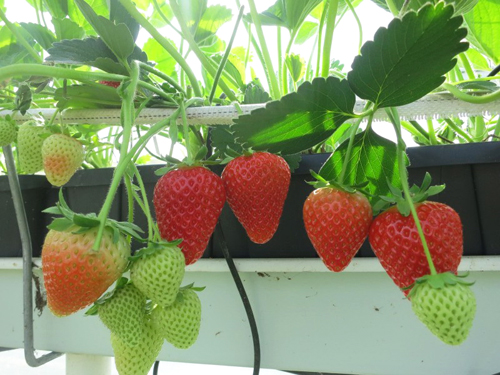
History of creation
Cabrillo is the brainchild of scientists from the famous University of California, USA. The authors are Douglas W. Shaw and Kirk D. Larson, who have already become to some extent legends in the world of strawberry breeding. Their hands created many beautiful varieties, which at one time became just a breakthrough, for example, perhaps the most famous remontant Albion, who turned the idea of varieties of neutral daylight upside down. The hero of our article was obtained from the crossing of numbered varieties Cal 3.149-8 and Cal 5.206-5, carried out in 2008. Then, at the experimental site Wolfskill Experimental Orchard in California, from 2009, the resulting specimen began to be multiplied for the purpose of subsequent selection selection, giving it the name Cal 8.181-1, and later CN236. After scientists were finally convinced that the varietal characteristics of strawberries are preserved during reproduction, the procedure for registering a new product under the official name Cabrillo began. Since 2010, Cabrillo has been tested at various sites for various parameters, and finally in 2016 a patent was issued for a new variety, claiming to be the best. The patent holder is the University of California.
Description
The plant looks very similar to Albion and San Andreas, but it has more abundant foliage, and bushes are more erect. Usulation is moderate. The leaves are slightly smaller than those of the comparative varieties, the petioles are shorter. The leaf plate is more concave, denser and softer, of bright green color with a rich “greasy” sheen, with pointed teeth at the edges. The flowers are large, white, bisexual. Strawberry flower stalks are powerful, tall, multi-primordial, and lie on the ground under the weight of the harvest.
Cabrillo's berries are very spectacular, much more beautiful than those of the same Albion and San Andreas, and even than many other remontants, and this is confirmed by farmers and gardeners. Fruits are regular, conical, slightly flattened, and appear shorter than those of the comparative varieties. The skin is deep, bright red, shiny. Achenes are yellow, shallowly submerged. The flesh is red, juicy, firm, but not firm, without crunching on the bite. The berries are much more aromatic than those of the comparative specimens, which undoubtedly has a positive effect on the success of fresh produce on the market.
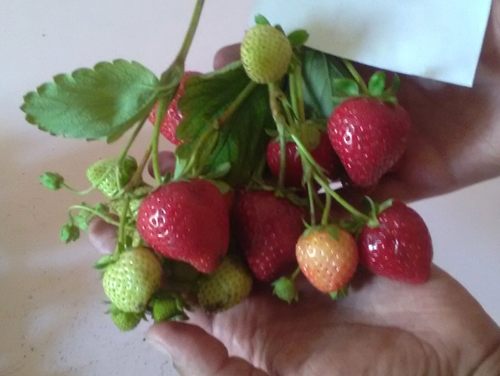
Strawberry taste is excellent.According to patent data and reviews of gardeners and farmers, among the remontant high-yielding varieties, our hero has a very decent taste, someone even says that he is the best in this regard, but not everyone supports this opinion. The berries are sweet, the gustatory palette is very harmonious, with a slight hint of sourness. Some gardeners believe that Cabrillo really has an immediate multifaceted taste, which cannot be said about the same Albon and San Andreas - they are usually described as "ordinary strawberries, no frills."
The fruits are universal in use, very good fresh, perfect for any processing, freezing, canning, decorate desserts and other culinary dishes. The berries perfectly tolerate long-distance transportation, are excellently stored, in a word, the variety definitely justifies itself when grown in order to sell fresh products to the market. The fruits are very beautiful, homogeneous, as for selection, attract the attention of the buyer and do not leave him indifferent due to their very worthy taste.
Cabrillo's berries are large, with an average weight of about 30 grams. Fruiting is stable, as befits a remontant; with proper care, the fruits do not shrink throughout the season. Some gardeners and farmers complain about the large number of small berries, but this is most likely due precisely to agro-technical mistakes, in particular to lack of nutrition, or to climatic conditions. Our hero bears fruit almost without interruption, starting from about the beginning of June to the end of October, so he desperately needs constant "feeding" in order to be able to form a decent harvest throughout the season. Although strawberries are declared to be larger-fruited than Albion and San Andreas, according to the results of tests at the Watsonville Research Center in 2012-2013, they were inferior to their rivals, but not by much. Also, the specialists of this center studied other characteristics of our hero in comparison with three remontant varieties. Planting was carried out by a two-line method at the rate of 17,300 plants per acre (0.4 hectares). Harvesting began in April and continued until the first week of October. Four varieties were compared: Albion, San Andres, Portola and "hero of the occasion" - Cabrillo. So what are the conclusions of the researchers?

- In terms of the size of the berries, our hero, in principle, showed himself at the same level with the compared varieties. The average fruit weight was: Albion - 32.6 grams, San Andreas - 32 grams, Portola - 31.7 grams, Cabrillo - 32 grams.
- The strawberry has shown itself to be at the highest level in appearance. The maximum possible score in this study is 5 points. The fruits of Albion were rated at 4.1 points, San Andreas - 4.3, Portola - 3.4, Cabrillo - 4.3.
- In terms of the hardness of the pulp, our hero also showed himself very well. Estimated density of berries: Albion - 12.2, San Andreas - 12.2, Portola - 11.4, Cabrillo - 12.2.
- But according to the results of the yield, the variety has surpassed its “rivals”, moreover, very significantly. From one plant were collected: Albion - 2.632 grams of berries, San Andreas - 3.090 grams, Portola - 2.900 grams, Cabrillo - 3.669 grams. This is the level!
Strawberry yield should be discussed in more detail. How are things going in practice? Indeed, even from Albion and San Andreas in real conditions it is extremely difficult to get even 1.5 kg of fruit, not to mention the declared 3 kg. And really, do not expect great miracles from the hero of our article. The declared 3.7 kg of berries from a bush can only be obtained with truly ideal agricultural technology, when grown in protected ground with strict control over environmental conditions and abundant feeding of plants with a cocktail of fertilizers and growth stimulants. Under normal conditions, in the open field, it is quite possible to count on the result of about 1.5 kg of berries per bush, and with more careful care, and 2 kg. Also, the yield is extremely dependent on the climate of the growing region - in its homeland, California, strawberries manage to give up all their harvest, but in many regions of Russia and Ukraine, due to the onset of cold weather, it is simply not possible to wait for the maximum return of the berries.By the way, it should be said that, according to patent data, Cabrillo differs from Albion and San Andreas in a better response to intensive agricultural technology. During the research in Watsonville, which we talked about above, all four varieties were grown using the same technology, with the same amount of dressing.
But in terms of resistance to diseases, Cabrillo was slightly inferior to his rivals. According to the results of studies for 2012-2014, our hero turned out to be more sensitive to late blight, anthracnose and verticillosis than comparative varieties, but not by much. For clarity, here are the numbers, the maximum possible score is 5 points.
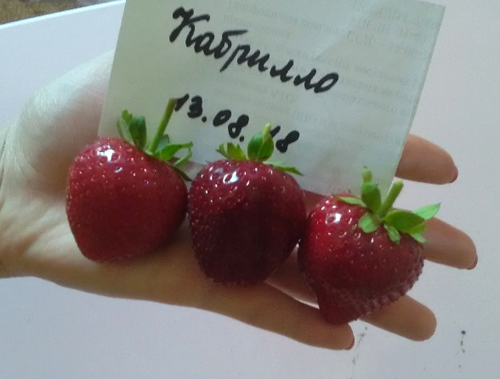
- Late blight resistance: Albion - 4.6, San Andreas - 4.3, Portola - 4.4, Cabrillo - 4.2.
- Resistance to verticillium: Albion - 4, San Andreas - 4.4, Portola - 3.2, Cabrillo - 3.4.
- Anthracnose resistance: Albion - 2.9, San Andreas - 2.9, Portola - 2.4, Cabrillo - 1.8.
In general, strawberries have pretty good immunity. According to patent data, the variety is moderately resistant to powdery mildew and verticillosis (which are presented in the list above), as well as to leaf spot. Moderately susceptible to anthracnose, but a 1.8 score slightly calls this "moderation" into question. The plant is quite tolerant to various viruses found in California, how it feels in this regard in Russia and Ukraine is an open question at the moment, which is under study. According to the reviews of farmers and gardeners, the immunity of our hero is quite enough, he is affected by diseases no more often than other varieties, but requires timely high-quality prevention. Someone even notes that these strawberries are suitable for organic farming. Of course, chemical treatments are still required to achieve the highest results. As for pests, with timely prevention, plants are not afraid of strawberry mites, there is no other information at the moment.
In agricultural technology, Cabrillo is quite standard, one simple rule is relevant for its cultivation - the better you take care of it, the more response you should expect. Variety of intensive type, responds well to increased attention to itself, therefore, to achieve the same "crazy" yield, you will have to spend enough time and effort. On the other hand, those who have already tried strawberries on their site say that they are quite unpretentious and do not require supernatural efforts. However, it is often difficult to unleash the potential of plants due to inappropriate climatic conditions. In general, even patent data indicates that maximum productivity can only be achieved when grown under controlled conditions in greenhouses.
There is very little data on the winter hardiness and frost resistance of our hero at the moment, but we can say that he feels quite comfortable in the south of Ukraine, he also shows himself well in the conditions of the Central zone of Russia. But a lot has already been said about the drought resistance and heat resistance of the variety on the forums - it bears fruit perfectly in the hottest seasons, the berries are not baked in the sun, and the plants themselves do not suffer from the sun. With watering, of course, the situation is slightly different, it is extremely important to provide the plants with a sufficient amount of moisture, otherwise you should not expect a huge yield.
The most important point of agricultural technology is the need for abundant feeding. It is important to apply fertilizers both at the root (watering) and on the leaf (spraying), it is also very important to provide strawberries with a good "start" - to add a sufficient amount of organic and mineral complexes to the soil before laying the plantation. Do not forget about the need for annual planting renewal.Such high-yielding remontant varieties very quickly develop their resource, so you should not keep them without rejuvenation for more than two years, with intensive cultivation, plants after the first year of use cannot show the results they are capable of.
What I would like to say at the end. Cabrillo is a very promising remontant with a really great future. Currently, it can be safely called the highest-yielding, while not inferior to other varieties in taste and marketability, and even surpassing them. This novelty has the potential to take the top spot on the commercial strawberry list and may also be a favorite of many gardeners. But, of course, there is also a fly in the ointment. Firstly, without truly ideal agricultural technology, it is impossible to achieve the declared 3.7 kg per bush. Secondly, not in all climatic conditions, the plants will live up to the hopes placed on them, and due to the short summer in some regions, when grown outdoors, Cabrillo may even lose to other varieties that are better zoned in such areas. In a word, you should not mindlessly embark on the pursuit of huge yields and dream of tons of berries from one hundred square meters. Our hero is still very young to draw any unambiguous conclusions about him, so try to grow him yourself, in order to make sure of all his advantages and drawbacks from personal experience. One thing is for sure - this variety clearly won't disappoint you.




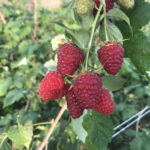
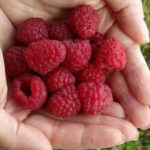



I like to experiment and try new varieties of garden strawberries - at the first opportunity I always buy new seedlings (fortunately, there is an opportunity to buy with a guarantee against re-grading). Unfortunately, I did not discover anything good in this variety for myself - the taste is mediocre (but, considering that this is rem, then it can be considered normal, but without enthusiasm), the size of the berries is yes, not bad, but there are not so many of them as I would like Cabrillo winters well, but it is very susceptible to diseases, especially to root rot. Of course, the 2 years that I have been watching him are not an indicator, and the soil is different for everyone, but I decided for myself. that the variety is only good for sale.
Can I have your phone number! this is my number 89 886 666 077